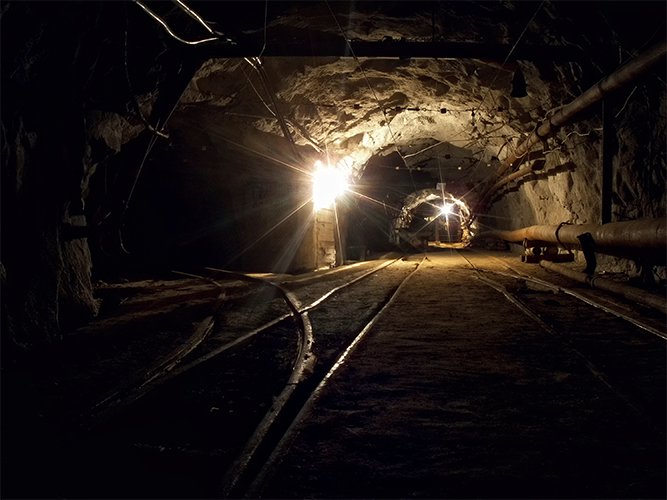
Optimizing Underground Mining with Resilient Mesh Networks
Communication technology is an essential tool to minimize and overcome the challenges inherent to underground mines, ensuring they are safer to protect personnel and increase operational efficiency. Industrial networks are providing an improved way of working for mining operators, with personnel and asset tracking technology on the rise across the sector.
The mining industry is benefitting from the growth of Industry 4.0 in connecting a large number of connected devices simultaneously, vastly increasing the amount of communications being transmitted and received. Industrial Internet of Things (IIoT) solutions help mining operators fulfill their potential and enable integrated solutions such as surveillance systems, data analytics, and automated/remotely operated machinery. However, it is critical that this has reliable, robust connectivity that works reliably in the most extreme conditions – ensuring that personnel can be kept safe when performing day-to-day operations and the mining assets can be protected.
Connectivity underground and on the surface
In a sprawling and complex environment, it is essential to have a reliable communications system to effectively monitor and manage equipment, machinery and personnel.
Traditionally mining operators have deployed and implemented wireless networks, such as Wi-Fi, Point-to- Multi-Point (PMP), or LTE. These options often lack the coverage, redundancy, and mobility required for ubiquitous communications due to total reliance on static infrastructure, which can affect throughput and latency and potentially lead to loss of coverage.
Reliant on fixed infrastructure, these networks cannot be relocated easily or dynamically. If attempted, altering infrastructure involves re-configuration that can be considerably time-consuming, expert-dependent, and expensive. With changing landscapes in both open pit and underground, the high bandwidth and low latency wireless network demands can be significantly limited. This presents another notable obstacle that operators must address – the critically dangerous possibility of a loss of connection. A mine cannot afford to experience any downtime without a risk to safety and productivity. Therefore, a mine’s network must be resilient and self-optimizing to avoid costly maintenance.
Resilient and mission-critical
The ability to adapt to a diverse range of mine topographies is vital, irrespective of how remote the mining site. When considering networking options, mine operators need a network that is self-optimizing and self-healing. Connecting all areas of a mine with sufficient secure, low-latency bandwidth is mission-critical. When operating in complex environments and with potentially dangerous machinery with large numbers of personnel, having situational awareness of all staff and equipment across the entire site is vital. Not only will personnel be able to conduct their tasks while being concurrently monitored, but potential risks are alleviated, and system performance can be measured and reported.
Asset tracking is gaining considerable traction in the mining market today. With real-time asset monitoring for machinery and equipment, the use of preventative maintenance can make sure these valuable assets remain in optimal condition. This can only be delivered by deploying a reliable wireless infrastructure that provides the machine data in real-time on equipment health. This is then reported straight to the central control center, giving staff an end-to-end view of production levels, potential faults, and locations of all moving assets.
Self-optimizing network
To support underground communications and overcome problems introduced by using technologies such as leaky feeders, mining operators should consider a much more resilient and flexible true ‘mesh’ network. Consisting of radio nodes that seamlessly form a resilient network and send and receive data continuously and can be fitted to assets such as equipment and personnel, mesh networking is a real mission-critical solution. In the knowledge that all mesh options are not created equal, operators should select a network that supports full mobility underground and in open pit mines, regardless of the inevitable changing environments. The right option will offer no decrease in data rate even with increased distances and speeds travelled and the onerous requirements of autonomous (or remotely operated) systems.
Providing multiple redundant peer connections, the right mesh network nodes will act independently and transmit data instantaneously. Networks should be avoided that rely upon a controller or single master control node that does not adapt to moving areas of operation. Having a network that can support Quality of Service (QoS) is essential. It allows mining operators to run all applications required on one single network, albeit separated by intelligent VLAN adoption to simplify and prioritize traffic on the IT architecture. Keeping data safe is imperative, so multiple sophisticated encryption options should also be a mandatory component of the solution.
Operators need to access constant connectivity, whenever required, in both open cut and underground. To track people and assets, all mines need a modern wireless network to help them realize the full benefits of a digitalized operation. Deploying a, self-healing and self-optimizing secure network that supports all applications arms mining operators with the tools they need to survive and thrive.
CHRIS MASON
Chris Mason, Vice President of Sales – EMEA for Rajant Corporation, the broadband communications technology company that invented Kinetic Mesh® networking, BreadCrumb® wireless nodes, and InstaMesh® networking software. With Rajant, customers can rapidly deploy a highly adaptable and scalable network that leverages the power of real-time data to deliver on-demand, mission-critical business intelligence. A low-latency, high-throughput, and secure solution for a variety of data, voice, video, and autonomous applications, Rajant’s Kinetic Mesh networks provide industrial customers with full mobility, allowing them to take their private network applications and data anywhere. With successful deployments in more than 60 countries for customers in military, mining, ports, rail, oil & gas, petrochemical plants, municipalities, and agriculture. Rajant is headquartered in Malvern, Pennsylvania with additional facilities and offices in Arizona and Kentucky.
For further information please visit: www.Rajant.com